There it stands, a cylindrical wheel of cheese with a slightly convex edge, its distinctive golden rind fire-branded with a seal that stands for a whole host of properties and qualities – taste, texture, technique and territory, not to mention almost 1,000 years of history. Grana Padano PDO (Protected Designation of Origin) is now one of the world’s most widely consumed cheeses. It is made by specialists across a specific swathe in a specific territory in the Pianura Padana (Po River Valley), Northern Italy, and in 2020, five million wheels were produced and almost 40 per cent were exported overseas.
The characteristics of this remarkable cheese change over the course of the maturation process, which lasts from a minimum of nine months to over 20 months. A Grana Padano that is aged for nine to 16 months makes an excellent table cheese, with a grainy texture and tasty, yet not overpowering flavour. Wheels that have matured for 20 months or more are fragrant and have rich flavour notes that recall butter and dried fruit.
Part of its uniqueness rests in its versatility and its distinctive, yet never overpowering, flavour which is key to many dishes, from starters to desserts: shaved over salad, melted into fondue, baked into sweet souffle, and served on its own on a bountiful cheese board. Furthermore, it has become popular in markets and dining tables around the world, far from its point of origin is just the latest chapter of a story that began in the Dark Ages.
DAWN OF THE DAIRY
This particular cheese can be linked to the very beginning of dairy farming. In around 1135, Benedictine monks from Chiaravalle Abbey, near Milan, created the recipe to make a cheese from surplus milk that could withstand the test of time. Their cellars became the first dairies, where they found that milk could be slowly cooked with rennet, then left in salt brine and lastly aged in cool warehouses, to make a hard, dense, and rough-grained but delicious cheese.
Originally named caseus vetus (‘old cheese’) by the monks, locals started to call it ‘grana’ for this grainy texture: grana means ‘grain’ in Italian. It started to become a staple in the Italian diet and highly fashionable on royal banquet tables. Each province made its own version of this cheese, until 1951 when any cheese made within certain regions of the Pianura Padana, had to adhere to strict guidelines and be called Grana Padano, with Padano meaning ‘from the Po River Valley’.
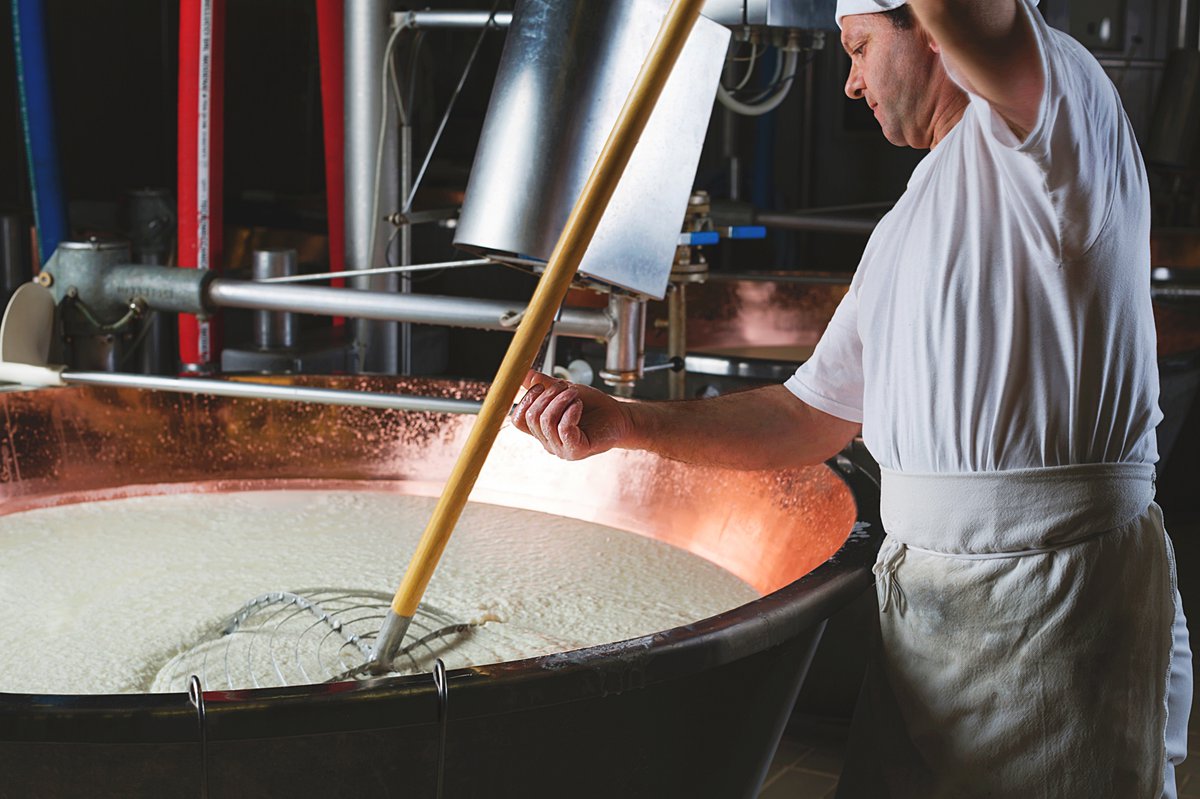
TIME-HONOURED METHODS
What began with trial-and-error has long since become a highly regimented and quality- controlled process. Grana Padano is still made and matured using the same raw ingredients – partially skimmed cow’s milk, salt, veal rennet, and a natural, antibacterial enzyme called lysozyme, derived from egg whites and the same steps passed down over the centuries are followed. (It is a milk-intensive process too, requiring 15 litres per kilo of finished cheese.) The mixture is heated, extracted, and moulded using the same classical-artisanal tools, from copper cauldrons and wood shovels to linen cloths. A casein label is added to each wheel, which specifically identifies it and the dairy from which it comes. All wheels are then left to mature in warehouses for no less than nine months, and sometimes more than two years. Once the wheels reach nine months of ageing, they must pass strict quality-control tests to be able to receive the Grana Padano firebrand. If they do not pass these tests, they will not be able to be called Grana Padano or marketed as such.
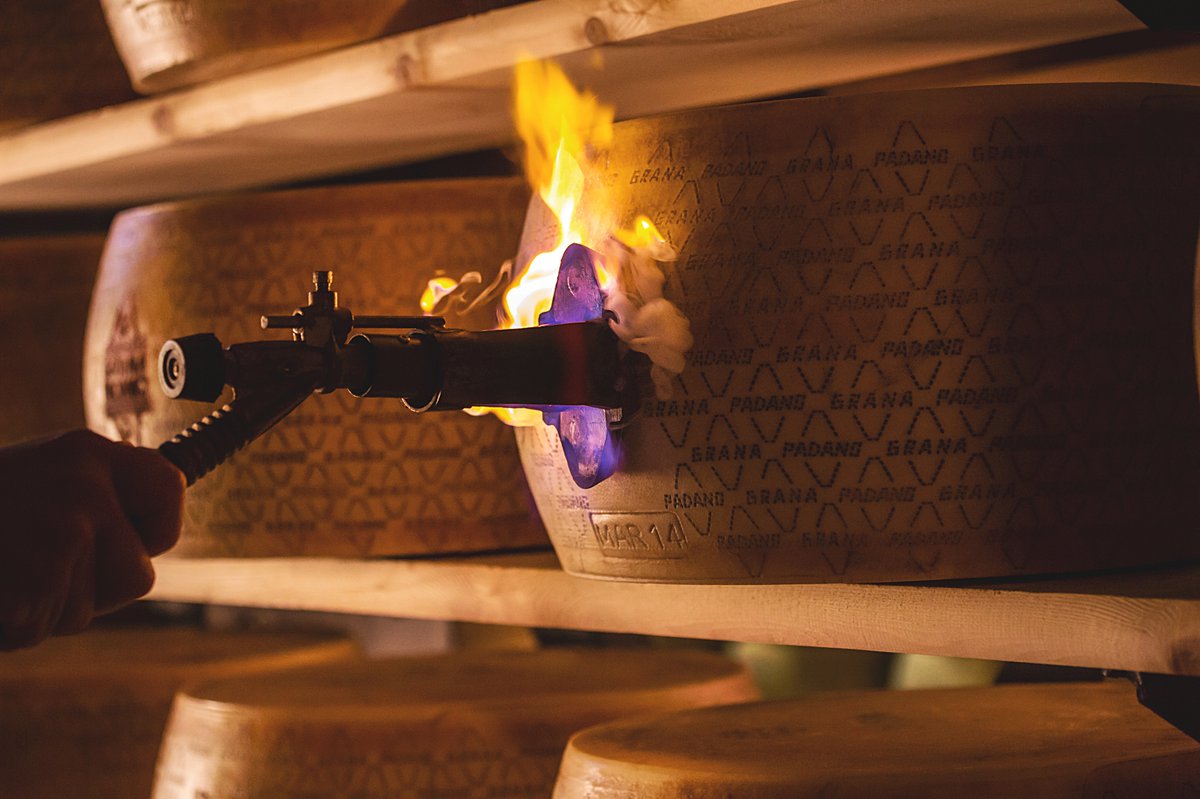
MAKING IT OFFICIAL
Since the creation of the Grana Padano Protected Consortium in 1954, various legal documents have further codified the process of making Grana Padano and its specific production areas within 32 provinces in five Italian regions in Northern Italy: Piedmont, Lombardy, Veneto, certain provinces of Emilia Romagna, and Trentino. An external company, CSQA, checks every wheel to ensure it is made to exact specifications.
SERVING SUGGESTIONS
With its fine-grained structure Grana Padano flakes beautifully onto oven-roasted vegetables, and its rich, delicate nuttiness compliments pasta, risotti and gnocchi dishes to sublime effect, as well as figs, dates, and hazelnuts on a cheese plate. Creamy, unmatured variants also pair nicely with a range of beverages. Various brands are now readily available around the world and especially popular in the UAE from Zanetti Grana Padano Grated to whole blocks of Ambrosi Grana Padano, aged 20 months.
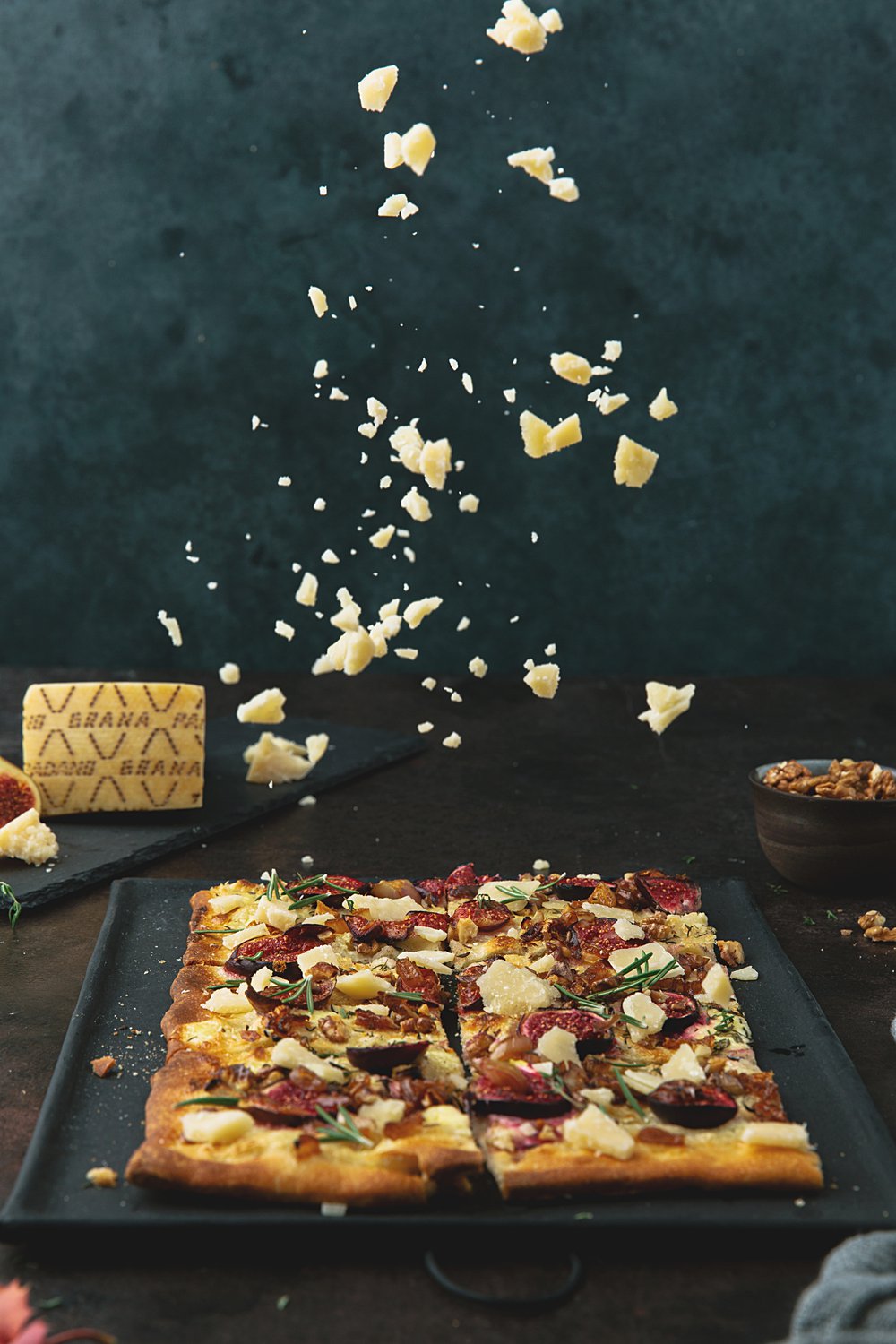
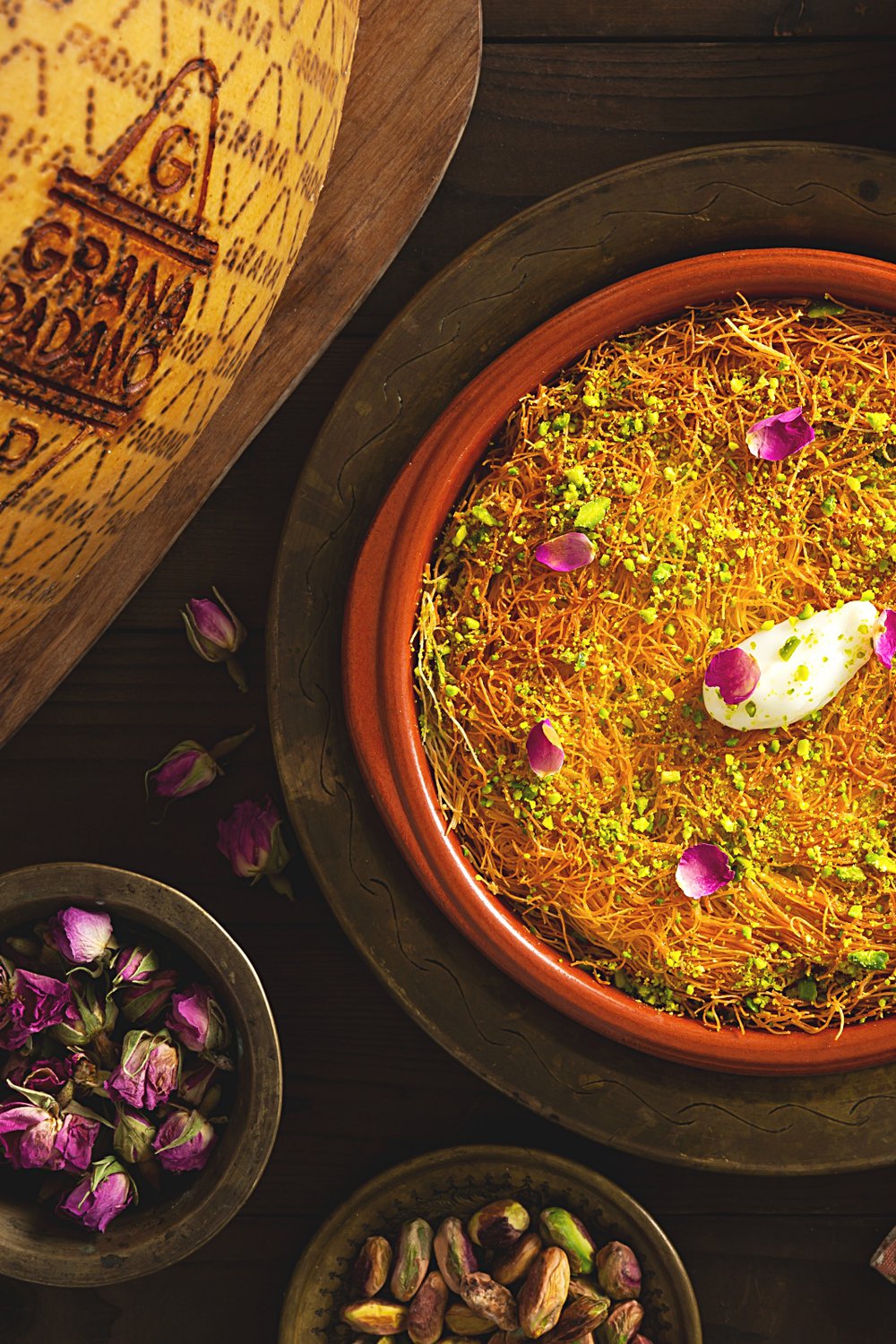
NUTRITIONAL PROPERTIES
Grana Padano possesses unique nutritional features such as quality proteins, vitamins and mineral salts, especially calcium: 50g provides 600mg of Calcium (60% of the daily requirement for adults) and 30g of Grana Padano contains the same nutritional value of half a litre of milk. It is also lactose free due to the characteristics of the production method and the long ageing process. Learn more about Grana Padano and find recipes here
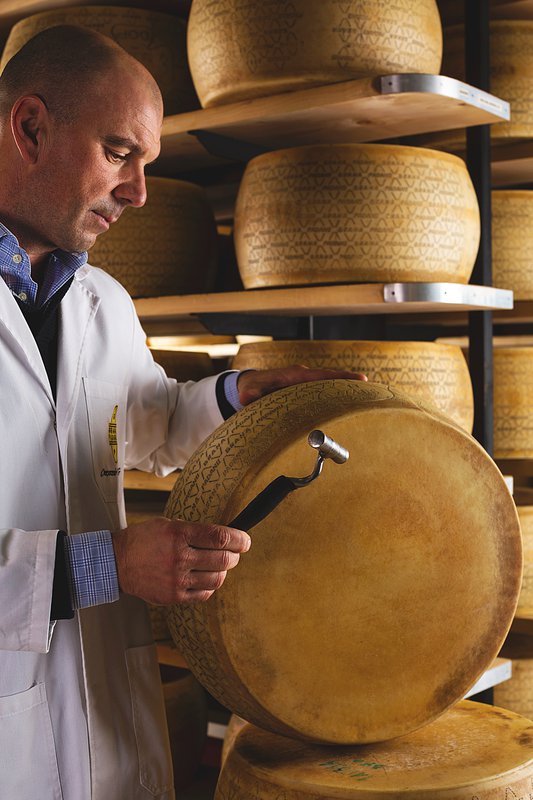
WIN THIS VALENTINE’S DAY
We’re giving away five picnic hampers filled with a range of Grana Padano and assorted delicious goodies. Look out for entry details on Spinneys’ social media channels.


